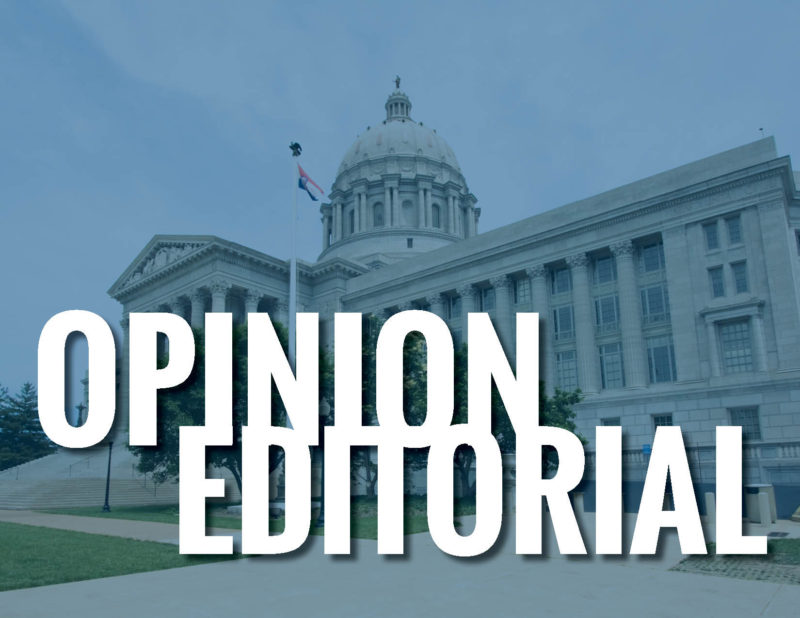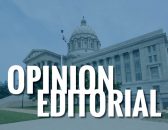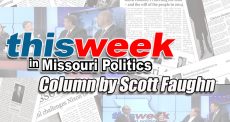By Travis H. Brown
Missourians broke ground on the first continental stretch of the Eisenhower interstate highway system in 1956. Nearly two years before, Dwight D. Eisenhower understood the importance of courting public opinion along with private sector leadership to move his lifetime army experience into real action on infrastructure investments.
President Eisenhower reached out to many leaders of cities, counties, and states to implement his vision. The process to upgrade our roads and bridges began with a Governor and a White House Conference on Traffic Safety on February 17, 1954. Colorado Governor Dan Thornton chaired his steering committee. M. H. Curtice, President of General Motors, chaired his business committee. At this point in President Eisenhower’s life, he had nearly forty years of United State Army convoy moving experience from two World Wars that drove his convictions into reality.
Steady and sure, Eisenhower’s transportation plans got passed in Congress with H.R. 8127 on May 6, 1954. However, proper implementation would require real on the ground problem solving from Governors and their communities. Six months after his Traffic Safety Conference, he convened a Special Committee on Highway Problems among his Governors. The steadfast leadership from an Army General who understood how to explain how national security, a growing population, and a prosperous economy interact was essential to the bill’s legislative acceptance. It is doubtful that Interstates 40, 55, 70, 29, 35, and 44 would have existed by 1960 across the Show Me State without a former General willing to own this responsibility and cost.
Fast forward to another United State Army veteran now in our Governor’s Mansion in 2018. Governor Mike Parson likewise has nearly forty years of real-world experience to apply to this aging transportation system. In less than three months, Missouri voters will have their first chance to consider new upgrades to their roads and bridges by a ten-cent increase in motor fuels tax. Up or down, the Parson Administration will own the residual success or failure of this statewide vote on their watch.
Harry S. Truman once said, “A President either is constantly on top of events or, if he hesitates, events will soon be on top of him. I never felt that I could let up for a moment.” The passing of this Labor Day should ring the starting bell for meaningful public private partnerships between transportation and economic development lobbies. If passed, Governor Parson is poised to demonstrate how a former sheriff and a cattle rancher can roll up his sleeves and get to work solving a public revenue challenge with no easy answers. If the November ballot measure fails, Missouri will continue to pound its baby boomer generation pavement across every Missouri Department of Transportation district with America’s seventh-largest road system.
Most Missourians spend more on their smartphone contracts today than they pay for common use of their roads and bridges. In fact, the last time that any Missouri voter upgraded their dedicated fuel tax, fewer than one in ten Missourians even had a cell phone. Today, there are more cell phones going down our highways than there are people to use them. Who among us would still want to be using their original three-pound bag phone once priced at $1.99 per minute purchased or leased in the 1990’s?
Today, millions of Americans pay user fees for modern transit without even stopping at a single booth or window. It is nearly impossible to not pay something to others for the use of their infrastructure on many major arteries – from Orlando to Washington, DC. If fuel taxes are not what voters want this November, the Missouri Department of Transportation operations could get passed by like a bag phone in an iPhone universe.
Let’s be clear: no one likes to pay taxes. For sure, Missourians typically possess more than their fair share of skepticism when it comes to how their debts and taxes are spent. However, publicly-shared long-term infrastructure investments provide one of the most clear-cut benefits to our economy, to our consumer lives, and to our local communities. If the State is to collect any revenue from any source, then user fees with direct user benefits remains one of the most efficient ways to make good things happen.
Moreover, transportation equipment manufacturing is a leading direct employment driver with more than 46,000 Missouri local jobs. According to the Missouri Department of Economic Development, manufacturing represents about thirteen percent of our 2016 Gross State Product (GSP), over the national average of most states. Missouri’s place in the middle of the Heartland means that anything traveling by road, rail, air, or water can be competitively-priced with smart logistical decisions.
It seems clear that this ballot measure, if passed, will not solve our entire funding needs in one vote either. That is why it is imperative that Governor Parson call the State together for a serious task force, conference, or convention of public and private sector thought leaders. Like Eisenhower, let’s join industry CEOs with public planners to apply private sector solutions to vexing design-build challenges when we can. Like the original 1954 White House Conference on Traffic Safety, this Administration has a short window to demonstrate that now is the perfect time to lead.
Like a military policeman on careful patrol, Governor Parson has applied his listening and outreach efforts wisely with big city mayors, suburban counties, and agricultural leaders alike over his very short summer. This Administration is poised to support our largest cities with creative options on how to improve our largest airports without new tax increases. What has seemed like a historical obstacle for a Governor rooted in rural America has now blossomed into a unique urban and suburban season to inspire public private partnerships to our roads, ports, and new modes of shipping.
Thanks in part to the airport modernization processes advancing in both Kansas City and Saint Louis City, international leaders in public infrastructure are making regular visits to some of our largest public assets. Governor Parson should harness this global expertise as it may mature to leverage how other projects can be secured, approved, or financed.
The events that should be on top of our transportation plans are applying our best technologies to each job, contracting with design-build strategies, and applying smart automation metrics. How can our leading industries help inspire a leading infrastructure plan worthy of our strategic location? Like a football coach at the beginning of season, there is no substitute for strong executive decisions in the locker room and on the sidelines.
With the State Legislature returning briefly to Jefferson City this month, now is the time for the Governor to call for a dedicated statewide task force to make sure that these long-range transit plans happen in some way while the right soldiers are still here to finish the track.
Travis H. Brown is the President of Grow Missouri, Inc., and the CEO of First Rule, LLC. A donation has been made in Brown’s name to The Food Bank of Central and Northeast Missouri for the writing of this editorial.





